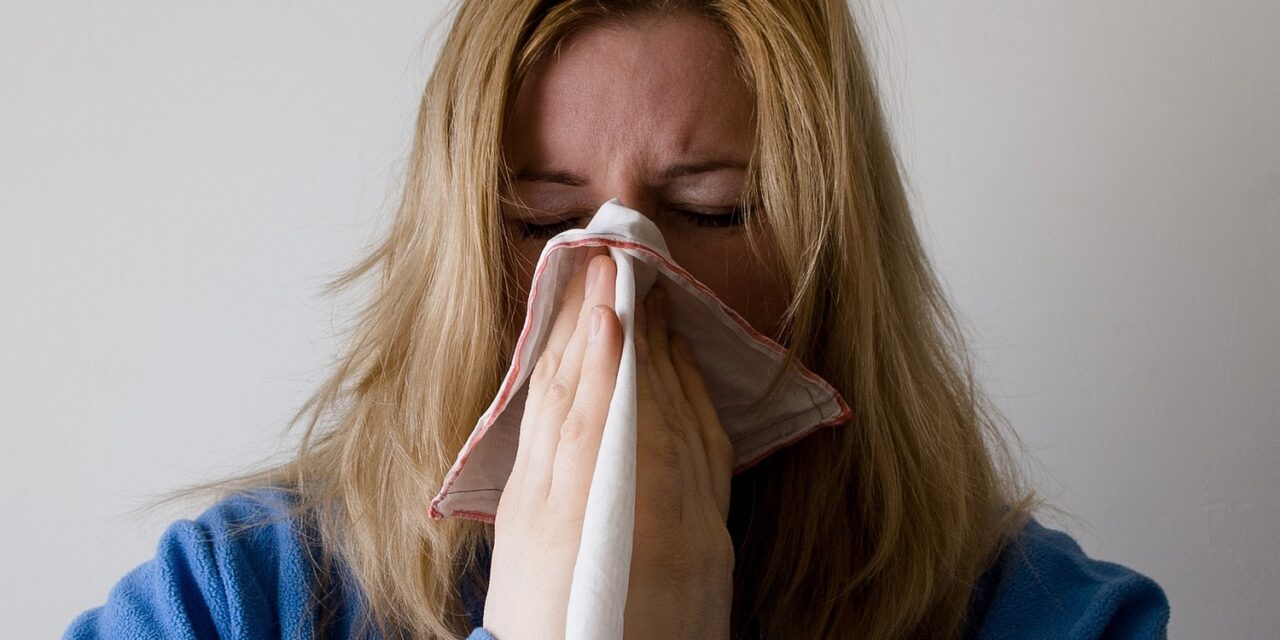Allergic diseases include atopic dermatitis accompanied by skin symptoms, hives, contact dermatitis, pollen allergies with respiratory symptoms, food allergies that cause a wide spectrum of gastrointestinal symptoms, but drug allergies that produce very different symptoms, and insect (wasp, bee) venom that can easily cause fatal anaphylaxis allergies too.
Since the symptoms of the symptoms can be mixed, and an allergen can cause skin, respiratory, gastrointestinal and other complaints during a cross-reaction, the diagnosis is not always easy, and the identification of the allergen is not necessarily easy.
Allergic diseases are now considered a public disease not only in countries with advanced health care, but also worldwide. As I presented in my previous article, there are countless reasons for this, such as the dramatic increase in air pollution, the constant and explosive increase in the number of chemicals used, the now almost inevitable intake of nutritional supplements or the decrease in breast milk feeding.
I would like to present the treatment options below.
The treatment of allergic symptoms is basically based on three pillars.
- allergen avoidance
- symptomatic treatment
- specific immunotherapy
At the same time, the treatment of respiratory, dermatological or food allergies is different, just as the possibility of treatments can also vary at the level of the individual.
In this article, we deal with the possibility of treating respiratory allergies and try to dispel another misconception.
In Hungary, respiratory or pollen allergies (especially ragweed) cause extremely unpleasant symptoms for hundreds of thousands of people. The cornerstone of the treatment would naturally be to avoid the responsible allergen, but this is still the so-called it is not easy in the case of indoor allergens, and even more difficult - even almost impossible - in the case of outdoor allergens.
Thus, the goal would be prevention, let's say the maximum extermination of ragweed. The flowering of the plant begins on average in July, and the allergic symptoms caused by it can last until the middle of October. During this period – as with all other plant pollen during the flowering period – symptomatic treatment is possible, the basis of which is largely antihistamines. A wide range of preparations is already available, but among them the modern, non-sedative so-called the use of second and third generation antihistamines (bilastine, desloratidine, levocetirizine, fexofenadine) is recommended. Non-absorbable steroid preparations acting on the nasal mucosa and the appropriate eye drops are also important in the treatment. In preparation for next year's season, however, it is also worth considering long-term solutions: allergy symptoms can be permanently treated with the help of allergen-specific immunotherapy. Immunotherapy is the only known cause of treatment for respiratory allergies, because the immune response changes during allergen immunotherapy. There is now immunotherapy against a wide variety of allergens (in addition to plant pollens, mites, fungi, and cat dander), so it is important to know the exact allergen. You should also know that if several allergens are proven to be the cause of the complaints, one type of treatment can be given at the same time, and this should always be the more common allergen, in most cases ragweed. With 3 years of treatment, 10 years of symptom freedom or a significant 80 percent reduction in symptoms can be achieved. Based on the patients' experiences, a significant improvement can be seen already in the next season, in the first year of treatment.
At the same time, there are lifestyle tips and changes that can make life easier for allergy sufferers.
It is logical that there is no pollen flight when the wind is calm, but in the immediate source areas (meadows, forests) a significant concentration can occur regardless. A very strong wind or storm causes significant pollen transport, but it also blows them away from the given area, causing a decrease in pollen both horizontally and vertically. A strong allergic burden can thus be expected in the weak and moderate windy period, especially in the dry period, as the low air humidity favors flying. In wet weather, the mass of hygroscopic pollen increases and it does not fly well. Rain that lasts for hours or days prevents the release of pollen, "washing out the air". At the same time, a heavy shower together with the products of the previous, let's say sunny period, suddenly brings a higher concentration close to the ground, which pushes it into buildings and apartments. These rains can provoke an attack in allergic patients, so ventilation should be avoided in such cases.
As a result of increased stress, the worsening of allergic symptoms is often observed, and some authors attribute this to the fact that stress hormones, primarily cortisol, stimulate the production of IgE. Multicentric studies have shown that a significant proportion of patients report primarily a negative life event from the period before the allergic symptoms. Parents' divorce and domestic violence not only torment the sufferer mentally, but also manifest themselves in physical and objective symptoms. Of course, stressful situations are inherent in our lives and cannot be avoided, but we still have to record them as a fact.
Finally, let's talk about the so-called about "indoor" indoor allergens (mites, "pets" at home). It is an important fact that, while in the case of outdoor allergens, the individual's ability to influence the load is small, the effect of indoor allergens can be reduced with care and substantial financial investment. Mites do not cause any disease by themselves, they are not intermediate carriers of other pathogens, and their importance also dates back to the 20th century. it grew as a result of changed construction technologies from the middle of the century. The reduced air exchange, the high humidity and the apartment's temperature of 23-24 degrees C (see panel apartments without individual heating control) are ideal for house dust mites. There is a clear connection between mite concentration and allergic diseases, especially hay fever and asthma.
Several methods have been tried to reduce the mite concentration. Complete prevention is impossible, however, lowering the humidity in the interior, together with lowering the apartment temperature, can be effective. Similarly, it is recommended to replace the carpet floor, use a wooden bed, use a synthetic mattress and bed linen. Of course, all of this can involve serious costs, but if we do it at least in the bedroom, a significant improvement in the quality of life can be achieved.
Washing at a temperature of at least 60 degrees C is recommended, especially for bed linen and children's textiles, but also for fur and stuffed animals.
Generous ventilation is also beneficial, but this is done at night during the pollen season.
Among the animals kept at home in our country, cat hair is the most important, followed by dogs, the role of the others (rodents, bird feathers) is negligible. Here, the removal of the allergen could obviously be solved, but the emotional attachment to our pets speaks against this. Here, too, the above possibilities come into question in order to reduce the allergen concentration, and if this is not effective, we can safely use well-proven anti-allergic agents.
As we can see from the above, with a few simple (or sometimes not so simple...) steps, our patients suffering from allergic diseases can significantly improve their quality of life, our task is to draw their attention to these possibilities, and then we have to resort to pharmaceutical solutions less often.
Misconceptions about treatment
Our patients often say that they take calcium tablets when they experience allergic symptoms, and we even know of cases where they keep a calcium ampoule with them and drink its contents. We often hear the phrase "I even took calcium, but my allergy came out." We do not know where this wrong practice spread in our country. The reality is that taking or giving calcium has no proven beneficial effect in case of allergies, and no improvement can be expected from this. Its use is unnecessary and can even be dangerous due to the loss of time. Looking at the guidelines in Europe and the United States, we do not find any recommendation to give calcium. Finally, here is the protocol used by the National Ambulance Service in the event of an acute hypersensitivity reaction:
"Calcium: there is no evidence of its effectiveness, so its use is NOT justified!"
Author: Dr. György Temesszentandrasi
Cover image: Pixabay













